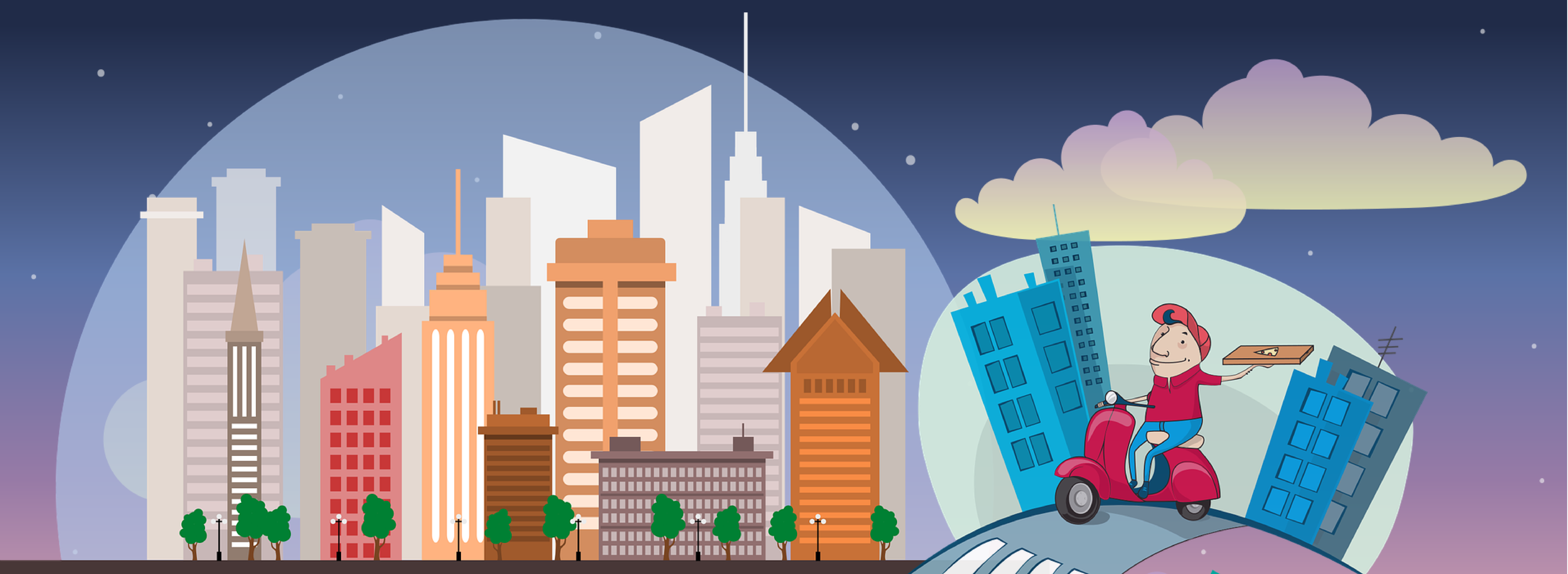In this post from Sara Carter from Enlightened Digital, the trend of sit-down restaurants becoming fast-food venues is explored. From customers who are wary of venturing out to new technologies available in the kitchen, there are a few factors to this change over.
Read on to learn more!
The outbreak of COVID-19 has rocked the restaurant industry in every country across the globe, including South Africa. Faced with many challenges, many restaurants in South Africa have permanently closed. Other restaurants have had to quickly pivot to adopt new strategies, even fast-food chain strategies like curbside pickup and delivery, to stay afloat. This raises the question: are traditional restaurants becoming more like fast food establishments?
Spoiler alert: the answer is yes. Read on to learn about how sit-down restaurants are learning to adapt to the COVID-19 era by adopting fast-food restaurant practices.
Customers Are Wary of Leaving Their Homes
As the number of COVID-19 cases skyrocketed across the globe, many government officials announced executive orders to shut down all onsite-dining at restaurants. During that time, there was an interest shift from dine-in options to delivery and takeout since people were (and still are) hesitant to leave their homes. As a result, between technological innovations, changes in the ways customers order and shifts in the labor market, the best time for restaurants to open up dining rooms again might be never. While that's probably not going to happen, it makes good business sense for restaurants to shift their focus from dine-in service to more profitable channels, like delivery services such as Mr Delivery and Uber Eats.
However, leveraging this channel can be a double-edged sword. On one hand, restaurants can stay open and even thrive when they encourage their customers to order delivery instead of dine-in.On the other hand, if fewer people are coming in to sit down and eat, restaurants need to rely heavily on delivery services, which can hurt smaller businesses if the commission fees are too high.
Delivery Makes Things Move Faster
While food delivery has kept many restaurants in the green, it’s not something that helps to get customers back into sit-down businesses. For wait staff, delivery is much simpler to execute. Instead of resetting tables and handling customers, they’re boxing up orders and handing them off to other individuals. It can help your restaurant’s bottom line when it comes to cutting out costs like linen cleaning and extra staff wages.
However, there is a drawback to delivery for restaurants. For example, some restaurants face negative reviews online from unhappy customers, not a new thing in the world of online reviews. When you can’t speak to someone in person about their issues, some of the personal touches of customer service are lost over the virtual exchanges.
Also, relying on third-party vendors for delivery can have its own drawbacks. If your restaurant doesn’t have its own online ordering website, the customer might think of the third-party brand rather than your business. Another is the negative press around these types of vendors. From US delivery app DoorDash’s tips that don’t always make it to the driver to Uber Eats which can take up to a 30% commission from the restaurant for delivery services, these vendors aren’t always the best of choices.
However, customers love being able to order food while reclining on the couch. Whether they choose to order via your restaurant’s website or a third-party vendor, it only takes a few clicks for food to make its way to them. In an era where everything happens instantaneously, customers are embracing food delivery services.
The Rise in Technology is Changing the Kitchen
It’s no secret that it’s hard to profitably run a dining room for customers who either can’t or won’t physically go in. Luckily, the tech world has come through with a solution for those of us who are a little lazy: ghost kitchens (also known as virtual kitchens and delivery-only models). The overarching premise of a ghost kitchen is that it produces food to be delivered elsewhere, usually via delivery apps like Mr Delivery and Uber Eats.
Ghost kitchens have thrived during the pandemic. Why? Since there is no dining room, a ghost kitchen requires less staff and less brick-and-mortar space than a traditional restaurant. Plus, this model allows restaurants to be able to pivot quickly. If the people do not want hamburgers, the ghost kitchen can rebrand itself as a taqueria.
However, even though many have claimed that ghost kitchens are the restaurants of the future, not everyone is cheering the complete switch to delivery-only restaurants.
At the end of the day, these changes brought about by the COVID-19 pandemic are leading to a shift in sit-down restaurant services. While many restaurants are trying to switch back to traditional in-person dining experiences, many are changing their practices to be more like fast food establishments. This change can be for a host of different reasons, but at the end of it all, it’s the customers’ needs that are affecting restaurant practices, which is the bottom line for a successful business.


